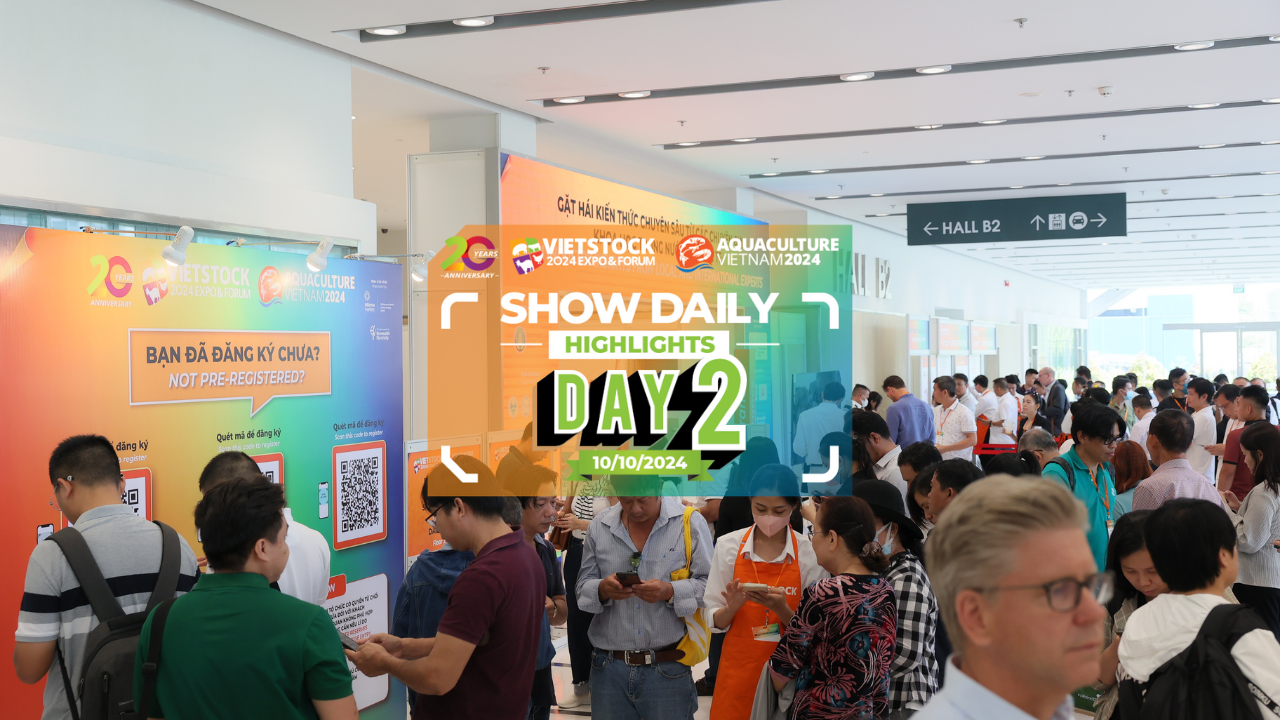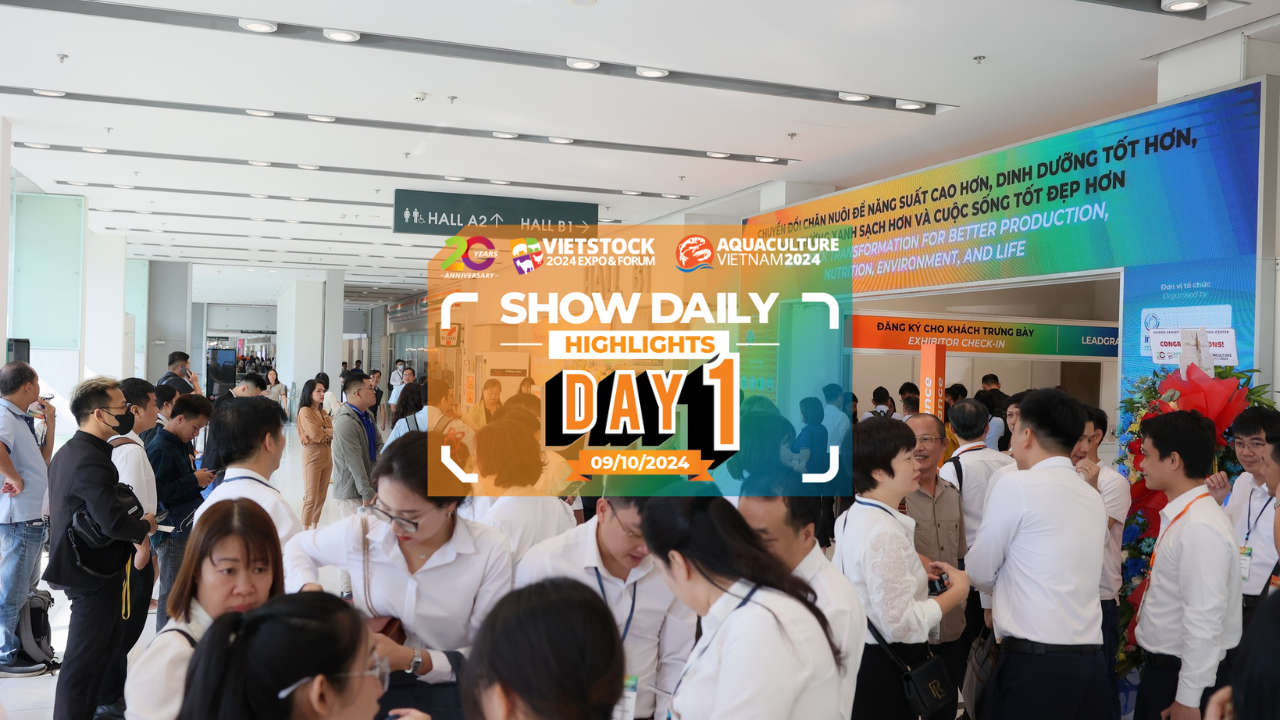CURRENT STATE OF PIG FARMING IN VIETNAM
As a crucial pillar in Vietnam’s economy, the pig farming industry significantly contributes to national food security and socio-economic development. However, in recent times, this industry has faced many fluctuations due to epidemics, market prices, and other factors.
This article will provide an overview of the vital role that pig farming plays in Vietnam’s economy. Additionally, it highlights the latest trends and fluctuations within this challenging context.
Status of pig farming
Total herd of pigs
The Vietnamese pig farming industry has experienced significant fluctuations due to the severe impact of African Swine Fever (ASF) since 2019. However, it is now showing positive signs of recovery. As of April 2024, the nationwide total pig herd in has reached approximately 27.5 million, recovering 85% compared to pre-ASF outbreak levels.
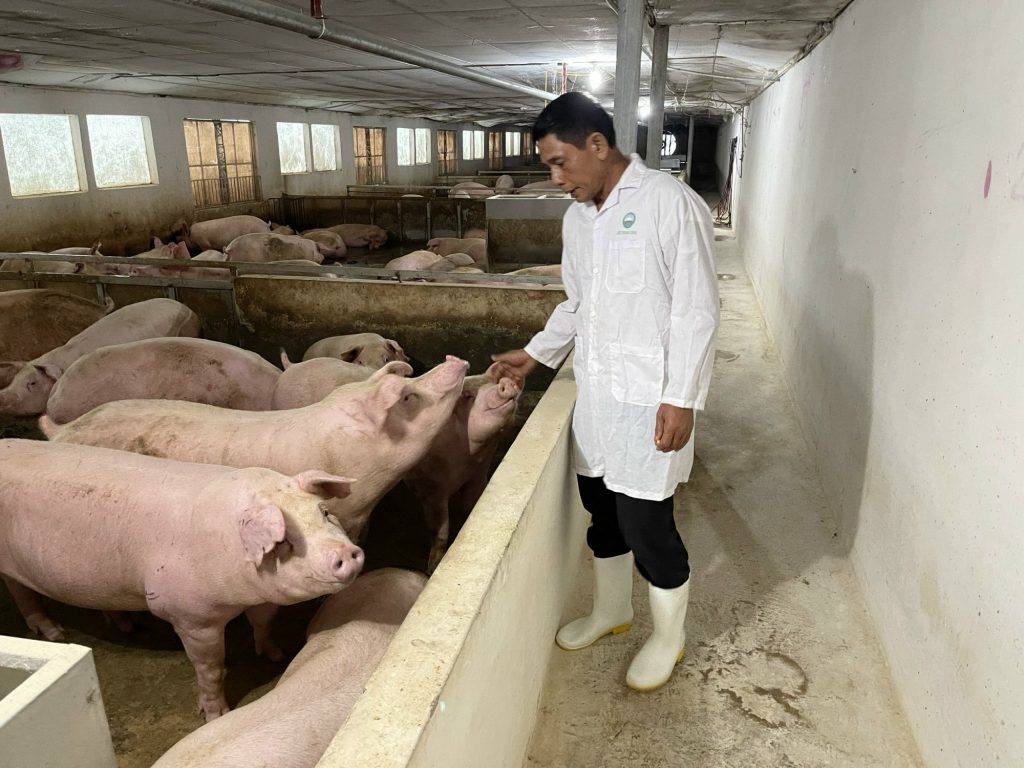
This level of recovery shows the efforts of farmers and businesses in restocking and developing the livestock industry. Despite this recovery effort, the current total pig herd remains significantly lower than before the outbreak, affecting pork production and market demand.
Pork production
Thanks to the recovery of the pig herd, the livestock industry sets to achieve a total pork production of over 7.89 million tons in 2024, representing a 3.8% increase. Specifically, fresh pork production is expected to exceed 4.87 million tons, a 4.0% increase compared to 2023.
However, the current pork production still needs to meet domestic consumption needs, especially given the high pork prices. Solutions are required to boost production, enhance productivity, and improve efficiency in pig farming.
Market prices
Pork prices in 2023 have risen compared to 2022 due to ASF and increased feed costs. Prices fluctuate between 50,000 and 70,000 VND/kg, varying by region and time.
High pork prices pressure consumers and impact the profits of pig farmers. Measures are necessary to stabilize market prices and ensure consumer and farmer benefits.
Scale of farming
Vietnam’s pig farming industry currently has a clear distribution by scale:
- Households Farms: These account for the highest proportion (approximately 70%) of the nationwide pig herd. Household pig farming tends to be small-scale, and less technically advanced, resulting in lower productivity and efficiency.
- Commercial Farms: Comprising about 20% of the total pig herd, commercial farms are mainly concentrated in southern provinces. These farms operate on a larger scale, apply advanced techniques, and achieve higher productivity and efficiency than household farming.
- Enterprises: Representing around 10% of the total pig herd, enterprises are primarily large businesses that apply advanced technology and safe farming practices. Enterprise pig farming has the highest scale, productivity, and food safety standards.
This distribution highlights productivity, efficiency, and product quality disparities across pig farming models. Policies are needed to support the development of large-scale pig farming models, promote scientific and technical applications, and ensure food safety.
Source of animal feed
Feed sources the pig farming industry in Vietnam primarily relies on two main sources:
- Natural foods: Includes grains such as corn, rice, soybeans, and agricultural by-products such as bran and beer residue.
- Industrial feed: Produced from ingredients such as corn, soybeans, minerals, vitamins, etc. Industrial feed has higher nutritional content than natural feed, enhancing productivity and efficiency in pig farming
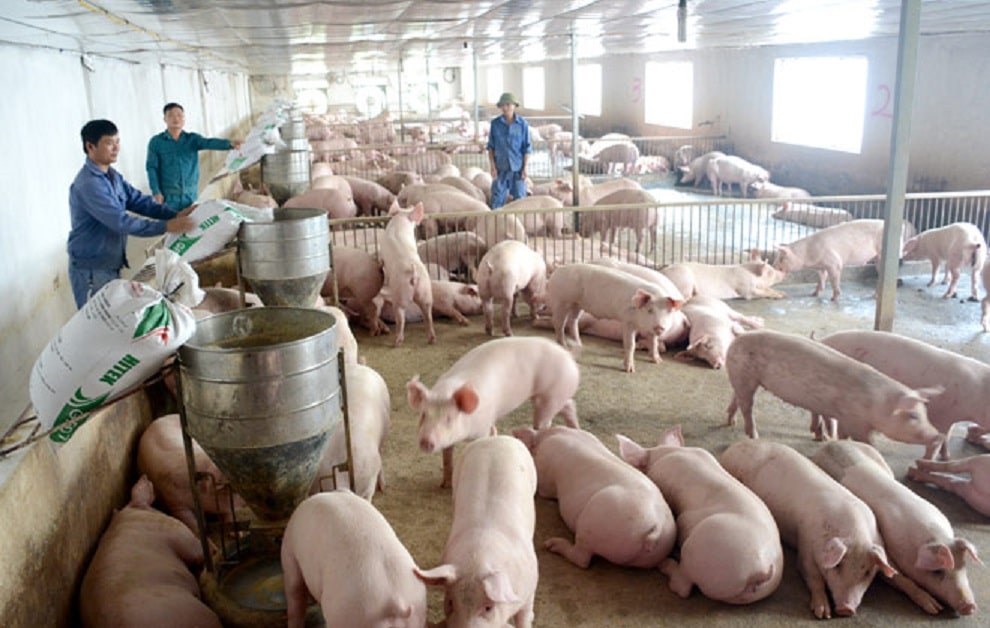
However, feed prices, especially for industrial feed, have increased due to raw material costs and exchange rate fluctuations. This puts significant pressure on product prices and farmers’ profits.
Diversifying feed sources, promoting domestic feed production, and reducing reliance on imported ingredients are essential. Support policies should also encourage efficient feed utilization.
Application of scientific techniques
Scientific and technical applications in pig farming are increasingly common, especially in large-scale farms and enterprises. Notable techniques include:
- Artificial insemination: Improves fertility rates, shortens reproductive cycles, and enhances breeding quality.
- Probiotic farming: Helps improve the digestive system, boosts immunity, and increases overall productivity.
- Automated feeding: Saves labor, minimizes feed wastage, and improves farming efficiency.
- Artificial insemination: Improves fertility rates, shortens reproductive cycles, and enhances breeding quality.
- Probiotic farming: Helps improve the digestive system, boosts immunity, and increases overall productivity.
- Automated feeding: Saves labor, minimizes feed wastage, and improves farming efficiency.
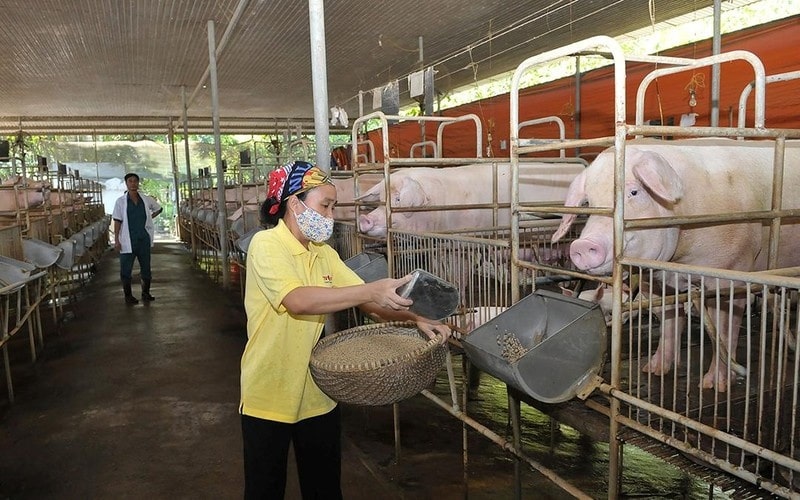
Disease situation
African Swine Fever (ASF) remains the biggest threat to the pig farming industry. Other diseases like blue ear and foot-and-mouth disease also pose potential risks. Disease outbreaks significantly impact production and pork consumption, causing substantial losses for farmers.
The disease severely affects pork production and consumption, causing great losses to farmers. Therefore, it is necessary to continue promoting disease prevention, including
- Comprehensive Vaccination for pig herds.
- Biosecurity Measures in pig farming.
- Enhanced Disease Surveillance.
- Prompt Outbreak Containment.
Challenges and solutions
Challenges
Although the pig industry is showing signs of recovery, there are still many challenges that need to be resolved for sustainable development:
- Disease: African Swine Fever (ASF) remains a significant risk, impacting pig production and consumption. Other diseases like blue ear and foot-and-mouth disease also pose potential threats.
- Climate change: Climate change leads to extreme weather phenomena such as droughts and floods, affecting animal feed production and pig herd health.
- Rising input costs: Increasing prices of feed ingredients (e.g., corn, soybeans, minerals) pressure product costs and farmers’ profits.
- Inconsistent breeding quality and feed: The quality of breeds and animal feed is not guaranteed uniformly, affecting the productivity and efficiency of livestock farming.
- Limited adoption of scientific techniques: Small-scale household farms face limitations in applying scientific techniques due to a lack of capital, knowledge, and skills.
- Technical barriers in export: Potential export markets (e.g., China, Japan, South Korea) have stringent quality and food safety requirements, posing challenges for Vietnamese pork exporters.
Solutions
To solve the above challenges and develop a sustainable pig farming industry, the following solutions are needed:
- Disease prevention and control: Strengthen efforts to prevent ASF and other diseases. Comprehensive vaccination, biosecurity measures, enhanced disease surveillance, and timely outbreak containment are crucial.
- High-quality breeding stock: Develop local breeding herds, apply scientific techniques to improve breeding quality, and ensure disease-free breeding.
- Food safety assurance Implement safe farming practices, use quality feed, and adhere to food safety regulations during processing and storage.
- Advanced production techniques: Support farmers in accessing scientific knowledge and applying advanced technologies (e.g., artificial insemination, probiotics, automated feeding) to enhance productivity and efficiency.
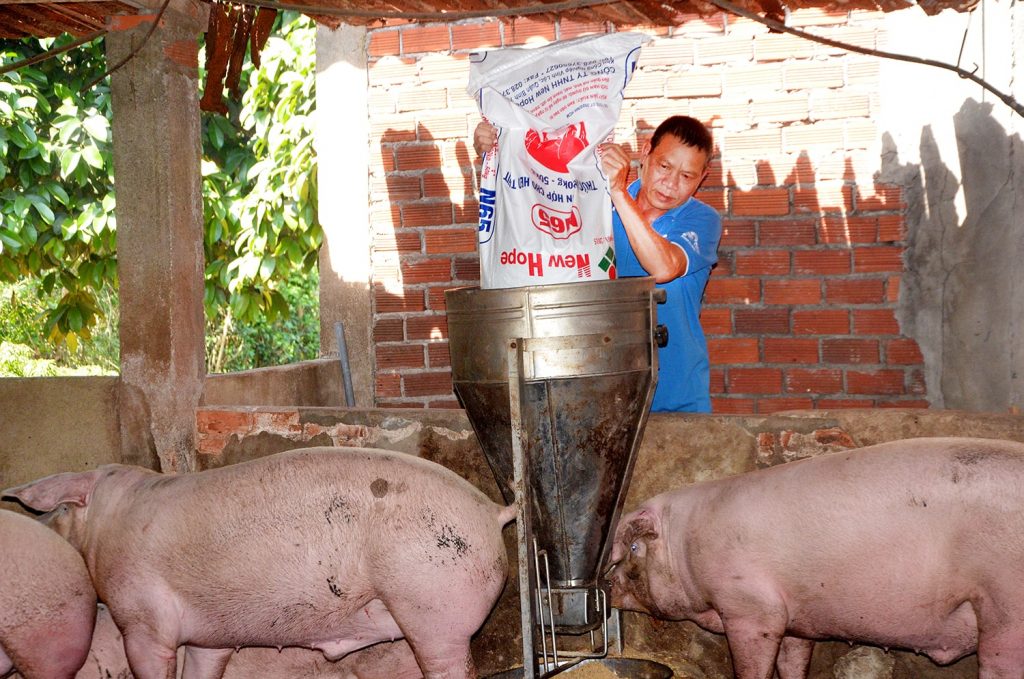
By addressing the challenges and implementing the above solutions, Vietnam’s pig industry can develop sustainably, ensuring a safe pork supply for the domestic market and export to international markets.
In addition, there needs to be close cooperation among authorities, businesses, and farmers is essential to effectively implement these solutions and ensure sustainable development of the pig farming industry in Vietnam.
Conclude
The pig industry plays an important role in the Vietnamese economy, ensuring national food security and creating jobs and income for people. However, this industry faces several challenges, including disease outbreaks, climate change, rising input costs, inconsistent breeding quality, unstable feed supply, etc.
To develop a sustainable pig farming industry, there need to be synchronous solutions such as Disease prevention & control, High-Quality breeding stock, Food safety assurance, Advanced techniques & technology, Export support, and Market diversification.

In addition, to improve the efficiency of pig farming, join Vietstock 2024 – Vietnam’s Premier International Feed, Livestock, Aquaculture & Meat Industry Show, which will be held from October 9 – 11 2024 at SECC – HCMC, Vietnam, and co-located with the Aquaculture Vietnam 2024. The special edition celebrating its 20th anniversary – Vietstock 2024 expects to attract 400 international & local exhibitors and 13.000 trade visitors & professional buyers during the 3-day show.
Vietstock Expo & Forum serves as the representation of innovation and industry expertise, bringing together experts and businesses from all over the world to explore the latest advancements, exchange knowledge, and foster collaborations that drive the livestock and aquaculture sectors forward.
Come to Vietstock 2024 to improve pig farming efficiency and develop sustainable business!
Pre – Registration: https://ers-vn.informa-info.com/vsv24
CONTACT US:
- Exhibiting: Ms. Sophie Nguyen – [email protected]
- Group Delegation Support: Ms. Phuong – [email protected]
- Marcom Support: Ms. Anita Pham – [email protected]



